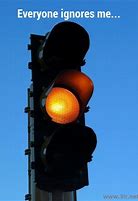03 Nov OBSCURE TRAFFIC OFFENCES AND HOW TO DEFEND THEM: DRIVING THROUGH A YELLOW TRAFFIC LIGHT
 Rule 57 of the Australian Road Rules states that a driver approaching a yellow traffic light must stop:
Rule 57 of the Australian Road Rules states that a driver approaching a yellow traffic light must stop:
- if there is a stop line and the driver can stop safely before reaching the stop line—as near as practicable to, but before reaching, the stop line; or
- if there is no stop line and the driver can stop safely before reaching the traffic lights—as near as practicable to, but before reaching, the traffic lights; or
- if the traffic lights are at an intersection and the driver cannot stop safely in accordance with paragraph (a) or (b), but can stop safely before entering the intersection—before entering the intersection.
As at March 2018, this offence carries a $514 fine and three demerit points. It is the same penalty as going through a red light.
Put very simply, you must stop at a yellow traffic light unless it is unsafe to stop. It is not, as a lot of people think, you must stop unless you can proceed safely. You MUST stop unless it would be unsafe to continue through the lights.
Red light cameras are only triggered when a vehicle crosses into the intersection on a red light, so it won’t pick up drivers failing to stop on a yellow light. People normally get fined going through a yellow light when it is witnessed by police.
There is a good reason for this law. It prevents people speeding up as they approach yellow traffic lights. Cars coming in the other direction wanting to turn right tend to bank up in the intersection, waiting for a break in traffic. If cars are allowed to travel through lights right up until the time the lights turn red, there isn’t an opportunity to vehicles to turn right until after the lights turn red, which has a flow on effect for other road users.
In the last 12 months police have given out 172 fines and 363 cautions for this offence. That’s a lot, considering that most people don’t even know they have committed an offence. What is very concerning is that there are three demerit points for this offence.
Defending a yellow light charge
As with all expiation notices, the only way to challenge a yellow light fine is to elect to be prosecuted and have your case heard in court. It is pointless writing to the Expiation Branch. Save your argument for the courts.
There are two ways to defend this charge:
Convince the court that the police officer did not see what they claim the saw (this is the hard way)
Satisfy a court that it would have been unsafe for you to stop. You could do this by giving evidence of what was going through your mind at the time you decided to proceed through the yellow light. This could include:
How close to you the car behind was. If the car had been tailgating you for five minutes beforehand, the police officer would not know this, but you would,
The braking performance of your car. Again, this is something only the driver of the car would know
If you have an injury that might be aggravated by a sudden braking
If you had loose items in the car that could have become airborne by sudden braking.
This charge has a really subjective element to it. A witness might consider that you could have stopped safely, but you, as the driver, might have taken into account a raft of factors that could not have been known by the witness.
At the very least, these factors may be enough to convince a Magistrate to reduce the demerit points for the offence. One of the very few guarantees in life is that if you pay the expiation fee, you will incur the demerit points for that offence. The only way to try to avoid or reduce demerit points is to have a Magistrate reduce the points.
